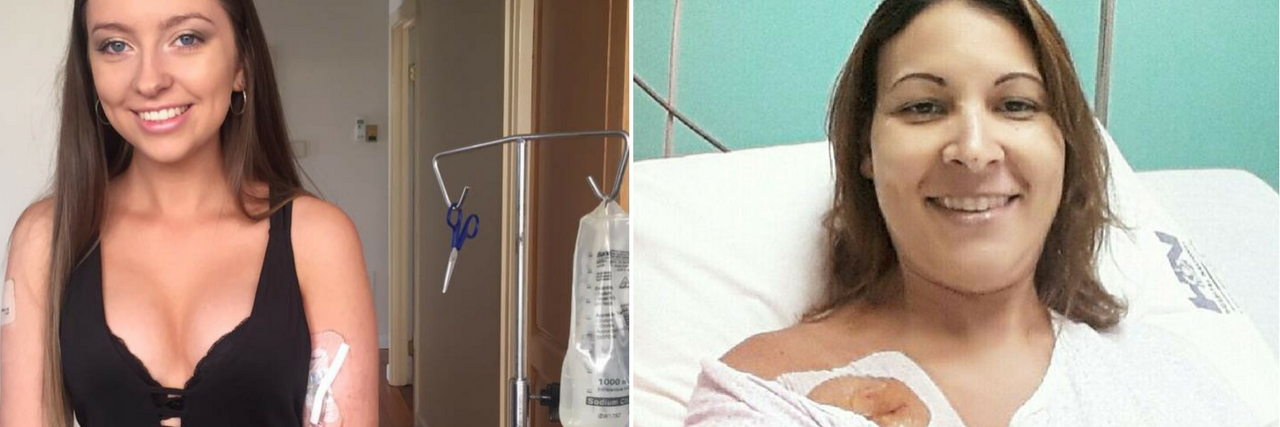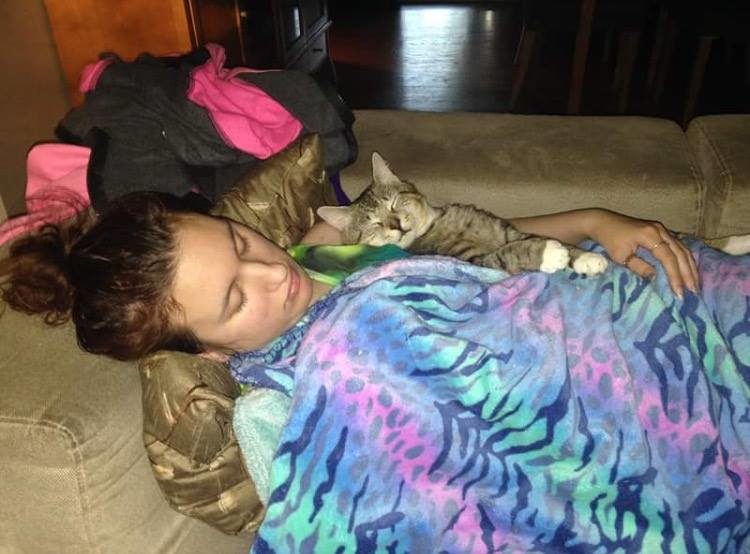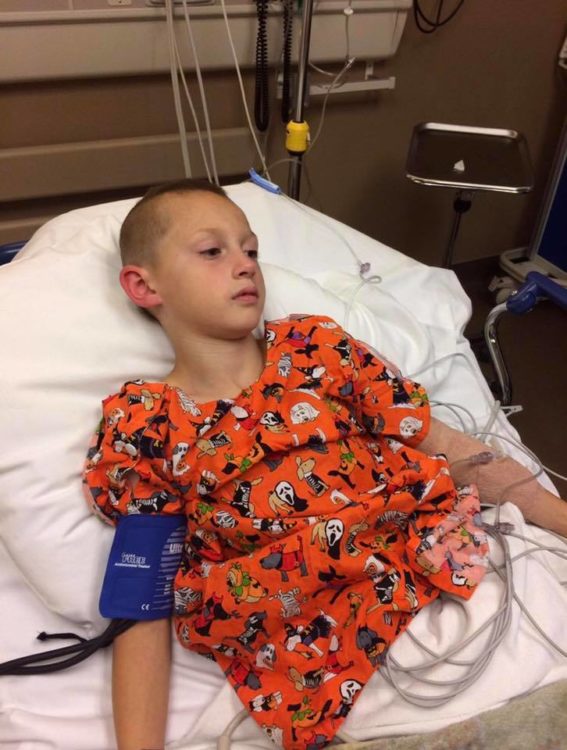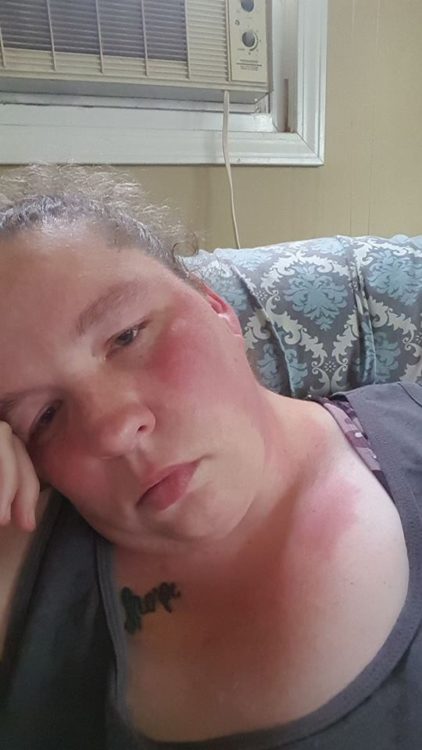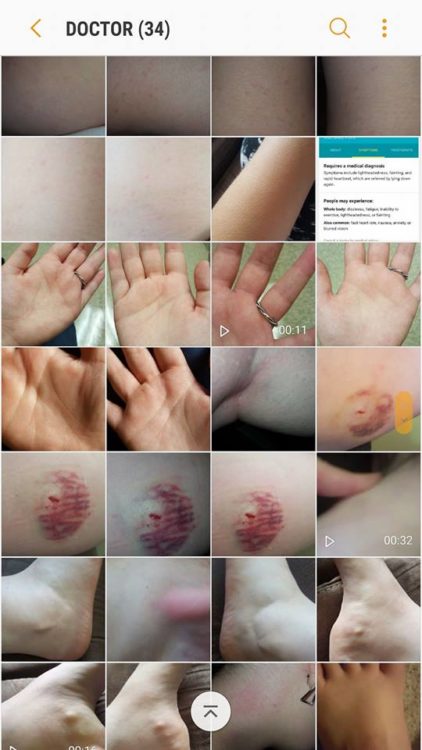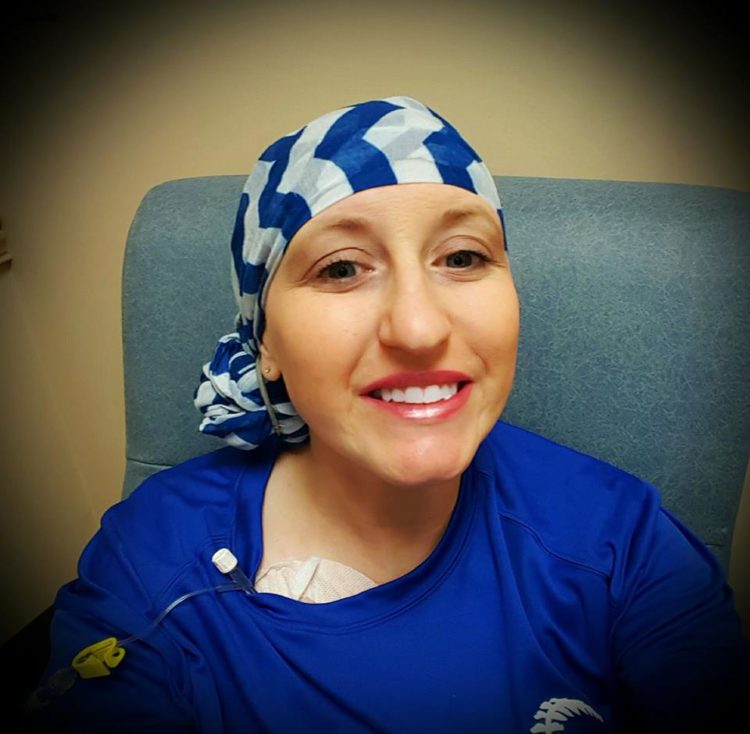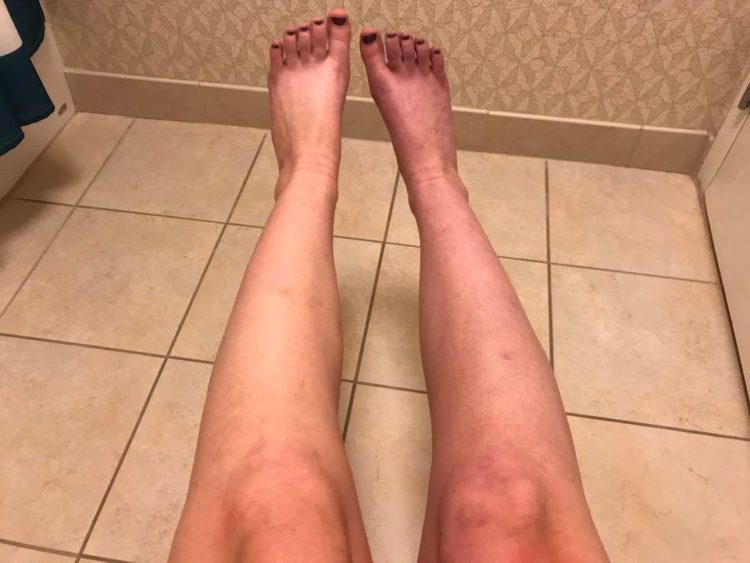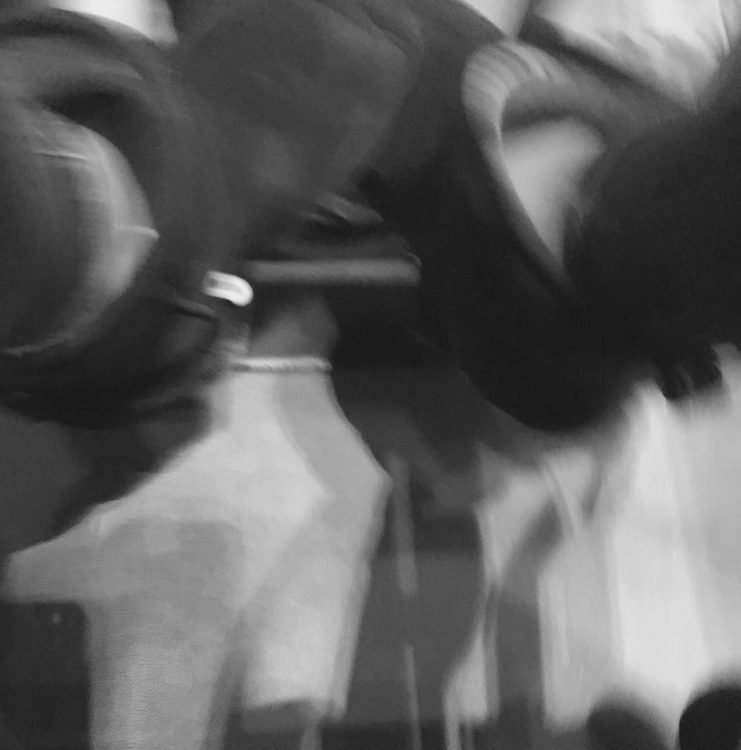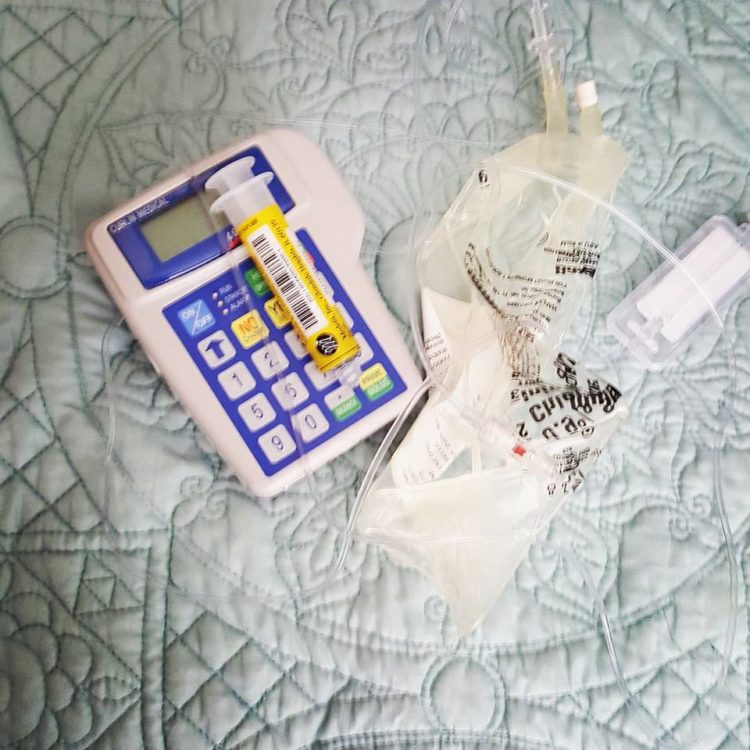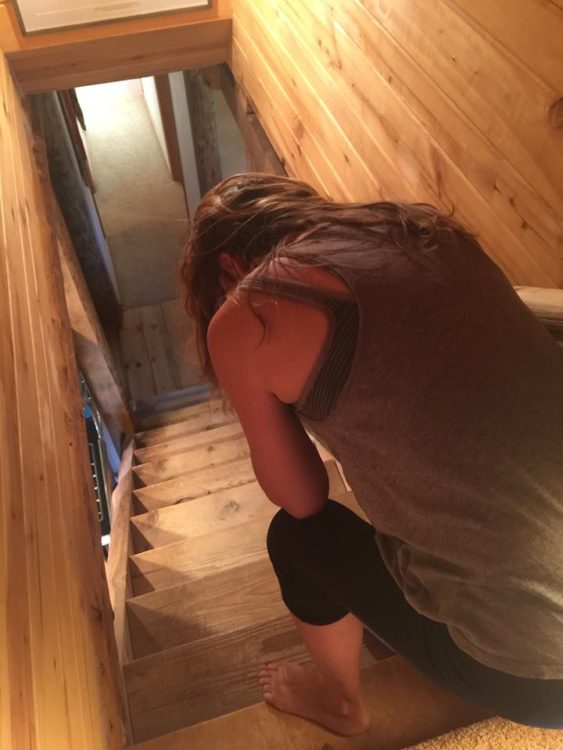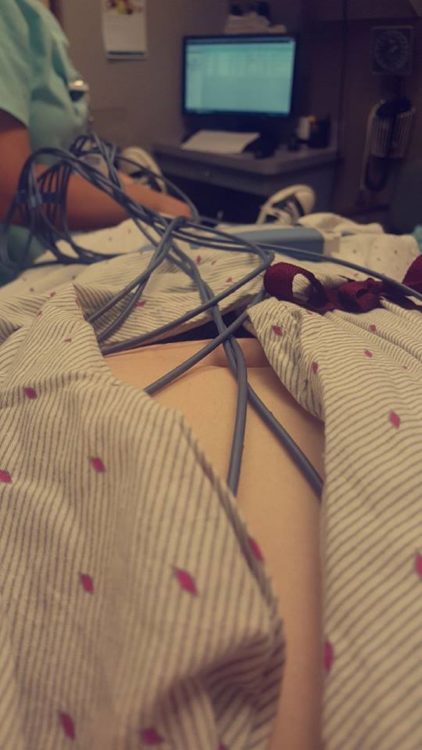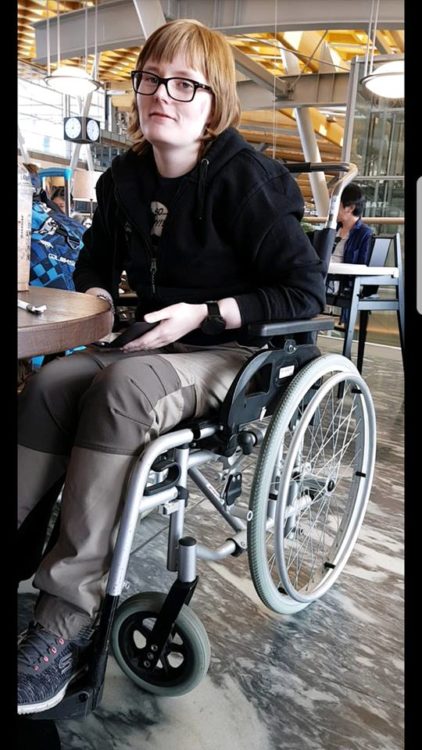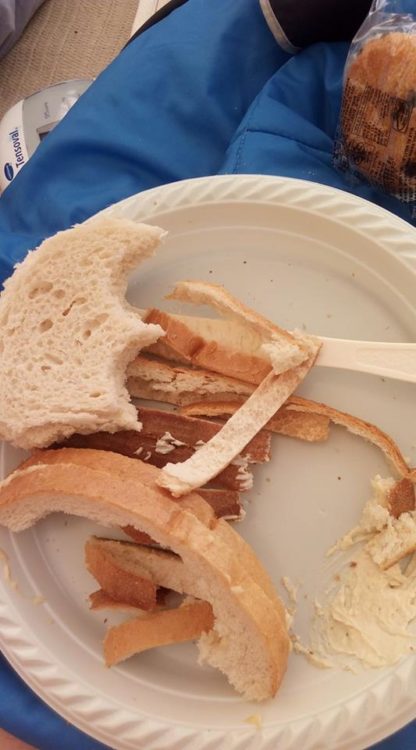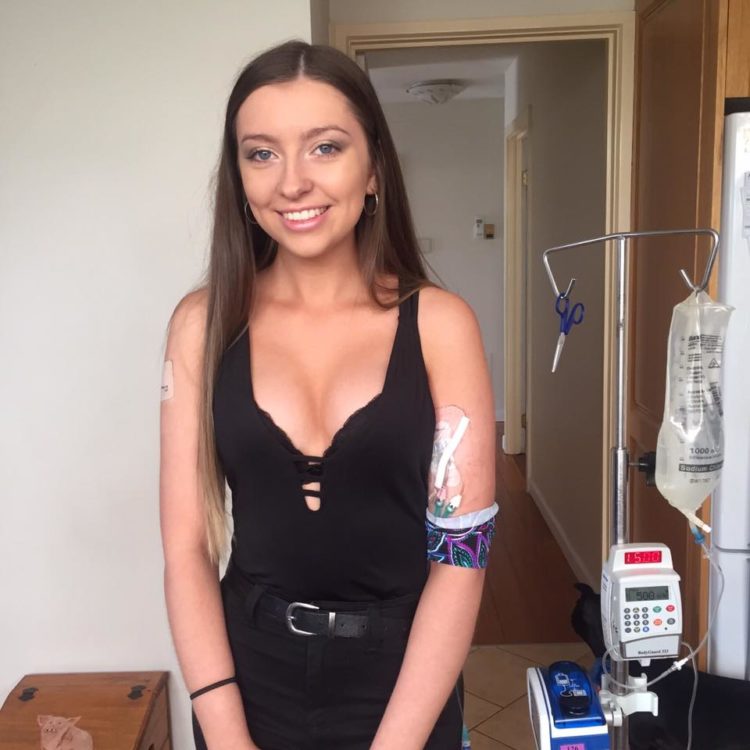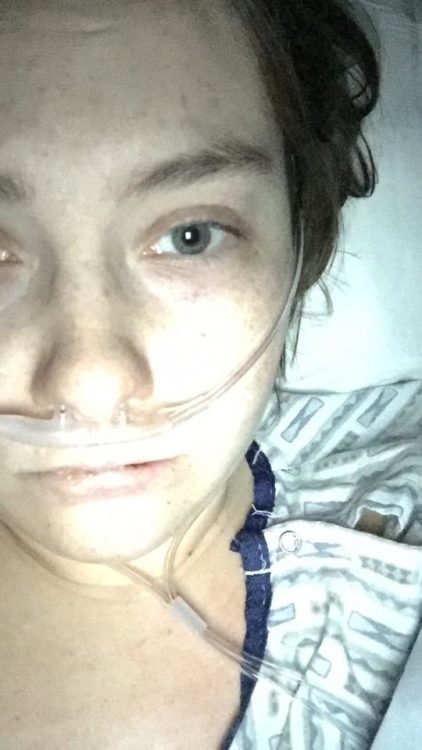Dysautonomia includes a range of conditions – such as postural orthostatic tachycardia syndrome (POTS) or neurocardiogenic syncope – in which the autonomic nervous system (ANS) does not function properly. This can affect major organs and bodily systems, as the ANS is responsible for activities such as regulating internal temperature, breathing patterns, blood pressure, heart rate, digestion, excretion and pupil dilation. The dysfunctioning of these systems can cause a number of symptoms that may have serious effects on your health if not properly managed.
While some symptoms of dysautonomia are clearly visible, such as blood pooling in your legs and feet, many others, such as a racing heart, lightheadedness or an upset stomach aren’t always apparent. To better understand the experiences of those with the condition, we asked our community to share photos that show what dysautonomia really looks like. Everyone may experience different symptoms and forms of the condition, but the following photos show that all are warriors.
Here’s what the community shared with us:
1. “I have to nap daily. Sometimes all I do is wake up, take my medicine and already need to nap. Even napping is exhausting! But having the purrfect nap buddy makes it a bit better!”
2. “I have dysautonomia and was diagnosed with neurocardiogenic syncope, autoimmune disease, irritable bowel syndrome (IBS) and more. To help with my bradycardia I have a pacemaker. This picture was taken when I had my first change of pacemaker, after 10 years of being diagnosed. I’m smiling because this is how I fight back. I always try to have the best attitude towards my condition.”
3. “This was at college orientation tonight (I’m the one on the right). I was having a great time, but when I started dancing I immediately felt my symptoms. My legs got tired and started hurting halfway through a song, and I was too tired to keep jumping. I couldn’t follow the instructions in another song (‘get low’) because I probably would have fallen over. I spent the rest of the night wishing I didn’t have dysautonomia.”
4. “My 9-year-old diagnosed with dysautonomia, cyclic vomiting syndrome, anxiety and PANDAS. He has trouble controlling his body temperature and has low blood pressure. He is an amazing athlete, especially for all he deals with!”
5. “This day I was completely exhausted and my skin flushing was making me feel very hot. My blood pressure was super high, my heart rate was at 130 sitting and I was miserable.”
6. “I actually have an album in my phone titled ‘doctor.’ I try to take photos and videos of my symptoms, as they don’t always occur at my appointments. I also have a list I continually update so I don’t forget to mention things!”
7. “Weekly IV fluids… one to two liters along with daily Flecianide, fludrocortisone, metoprolol and amolodipine to treat my severe POTS. Cardiac rehab as well.”
8. “This is a photo of blood pooling in my legs because of POTS. It is especially prevalent on my right side because I have problems with muscle weakness on that side due to a traumatic brain injury. This photo was taken after an especially taxing day that exasperated my symptoms. I was experiencing dizziness, lightheadedness, tachycardia and other pre-syncope symptoms. In addition, I was extremely nauseous and had been dry heaving for a few hours prior to this.”
9. “Tilt table results.”
10. “This was the day I received my Master’s degree. My spirit is feeling accomplished and grateful and amazed; my mind is focused on pretense, on pretending I’m not afraid I won’t make it through the ceremony without vomiting, fainting or collapsing. The best part about this day was, of course, receiving my counseling degree; the worst part was wondering whether or not my body was going to allow me to use it.”
11. “I took this picture by accident, but when I realized it was exactly what my world looks like when my dysautonomia is flaring, I kept it.”
12. “This is what happens when I stand up too fast or too long. I have both Ehlers-Danlos syndrome (EDS) and dysautonomia so it takes me a while to get back up when I fall/pass out. I had accomplished school and three choir rehearsals the day this was taken. I was very overdone, but my sweet doggie was making sure I was OK.”
13. “This is me now.”
14. “This is me when a friend wanted to use me as a model for her photography. I was dizzy and lightheaded because it was way too hot outside for my POTS to handle. After this picture I spent 15 minutes laying on the concrete trying to get my heart rate to go down.”
15. “This is what the end of my day looks like and what freedom really looks like. Because I have more freedom attached to an IV pump then I ever did before.”
16. “[This was] last week after accessing my port for the very first time on my own! It will make it so much easier to get fluids this way, plus I can get them more often.”
17. “Lyme-induced POTS. Trying not to pass out when going downstairs. A daily occurrence – multiple times a day. Here I am getting tunnel vision and the “whump-whump” staticky sound in my ears. Time to grab the rail and get my head down.”
18. “I have a few diagnoses, like most of us do, and most of us have dealt with their fair share of testing as well. This was last month. I had to have an EKG to check my heart.”
19. “I can walk, but not long distances. [I can’t] stand up for long without getting dizzy, drop in blood pressure, pre-syncope/syncope, etc… This was on my way to be a volunteer at a summer camp and had a few hours of waiting for the other volunteers. When I am traveling by airplanes I order assistance and borrow a wheelchair at the airports. Borrowing a wheelchair makes travel and shopping easier to overcome. Yes, it is exhausting to use a wheelchair as well, but I don’t have the same big risk of falling because of syncope or seizure and I still use less energy sitting in the chair than walking. It is a solution to the bad days I need to get out or am going somewhere to travel, but am I able to go without I will.”
20. “I was in the middle of nowhere at camp and I got one of the dysautonomic events. I started vomiting. This is what I ate all day – a hummus sandwich and electrolyte water – while everyone else enjoyed juice and normal water.”
21. “For me, life with dysautonomia means running IV fluids every day. Even before a birthday party, just so I can stay upright!”
22. “I have POTS. This was taken right after I had a bad syncopal episode in a grocery store. As you can see, my feet are bright red because of the blood pooling in my legs. I had to lay on the grocery store floor until it passed. This happens often enough that I now get one to two liters of IV fluid daily to increase my blood volume, and now use a wheelchair for shopping and community mobility so I don’t pass out and hit my head!”
23. “After pacemaker surgery for gastroparesis and POTS.”
24. “One of the worst POTS episodes I caught – well, before I was diagnosed. This was my norm for most of my life. My heart rate could spike as high as 150 – just standing. I felt like I was going to die when this picture was taken. I could barely stand, barely breathe. I was shaking all over and weak. I had to fight every second to get my diagnosis. I’m doing better now, but it’s only barely controlled by several medications (I’m one for whom water and electrolytes and salt do nothing, whee). I also have esophageal and intestinal dysmotility and possibly mild gastroparesis, which my GI says is probably caused by my dysautonomia.”
25. “This is a photo of what people see almost every day. I work so hard to try and look OK. Whether it’s with makeup or other things to distract from the fact that I really feel completely awful. My friend took this picture and while I look perfectly fine, I could feel my heart beating in my chest. My legs were turning purple, I was dizzy and nauseous. All I wanted to do was lie down and take a nap. But if I were to do that every time I felt this way I would never leave bed. So I put on this face. This is the face of dysautonomia.”
26. “I felt the lowest in this picture. I had been in the hospital for about a week and it had taken a toll on me. I used music to help soothe me and my mom sat there and sang with me. Dysautonomia can be extremely difficult to live with at times but I just keep reminding myself that there are better days ahead!”

